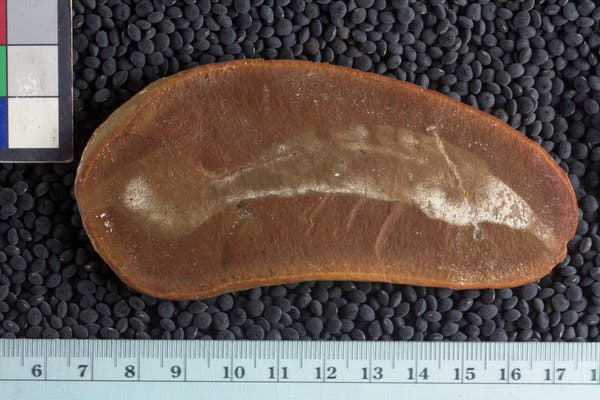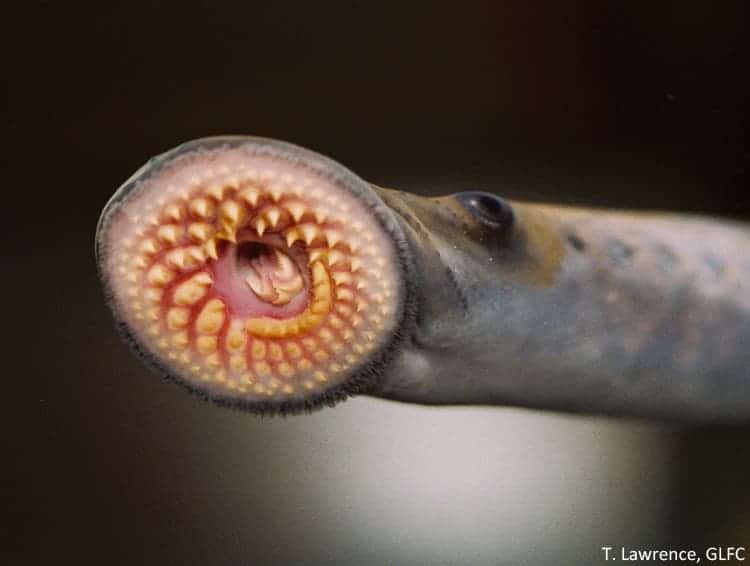Exactly six decades ago, an amateur fossil hunter called Francis Tully came across an usual find some 50 miles south of Chicago. The fossil belonged to a completely new species and looked like a oversized foot-long worm or snail. Since then, hundreds of other specimens have been found, yet despite the significant fossil records and the efforts of many scientists from around the world no one had ever accurately pinned it down the evolutionary tree. After many, many years, this perplexing creature known in popular culture as the Tully Monster has finally been properly described and earned its rightful place among its cousins: the lamprey.

The Tully Monster is quite famous. It’s the official fossil of the state of Illinois and it’s been often covered by the media as a mysterious creature given scientists weren’t able to figure it out. Its weird features were also appealing. Victoria McCoy at Yale University, lead author of the new study, was fascinated by the Tully Monster since she was a kid. Once she became a paleontologist, this interest lingered until McCoy eventually approached the Field Museum and asked to examine some fossils of the ‘beast’. Boy, did she — about 1,200 specimens of Tullimonstrum gregarium were photographed from all angles, measured and thoroughly documented. Advanced imaging techniques were also used like the Advanced Photon Source, an electron accelerator and storage ring operated by the Department of Energy’s Argonne National Laboratory. It took many months to complete. It was all worth it, though.
At first, like everybody else, McCoy thought that maybe Tullimonstrum g. was a mollusk since there were some snail-like creatures that looked similar around the time the monster was around, some 350 million years ago. Closer inspection turned this thought upside down. The animal had a thin rod that ran from the hammerhead-shark like eyes to the back of the tail. Some have interpreted this as being the stomach, but McCoy and colleagues proved that this was actually a notochord, a flexible rod that supports the backbone. The Tully Monster was in fact a vertebrate!

The animal also had gills and a jointed snout lined with conical teeth. This suggests that the animal is related to the lamprey, an eel-like type of primitive fish which spends part of its life in marine and part in fresh water. The lamprey is distinguished by a blood-sucking toothed, funnel-like mouth. The Tully Monster seems to show that the lamprey isn’t that primitive, given how different the two look. Instead, the lamprey likely went through many evolutionary stages in the course of the lineage’s 500 million years existence.

The Tully Monster spent most of its life in shallow seas and likely shared waters with small sea life like other fish, horseshoe crabs and amphibians. The eyes mounted on the external rod likely granted the monster a binocular vision, similar to the hammerhead shark, the researchers reported in their paper published in Nature. Its snout allowed it to grasp food, which it would scrape with its tongue. The researchers don’t know yet what the animal liked for diner. “It could have been sticking this thing down worm burrows or grabbing things that pass by,” McCoy told The Atlantic. “But we don’t know a ton about it.”
When asked whether or not the monster should be renamed, Carmen Soriano, a paleontologist at Argonne National Laboratory, put it bluntly: “No, because it’s still a monster,” she said. “It’s something really different from anything we have seen. It’s one of a kind. If you come back to this idea of a monster as anything strange, it’s still strange.”






